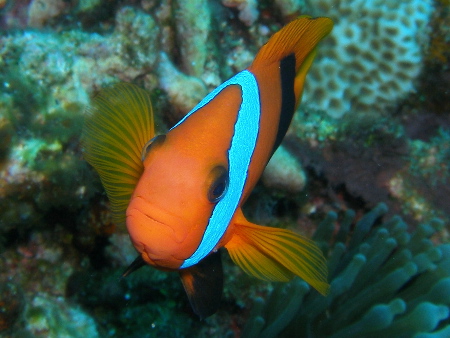AUSTRALIA




 |
Australia is the sixth largest country in the world. It's about the same size as the 48 mainland states of the USA and 50 per cent larger than Europe, but conversely has the lowest population density in the world, with only two people per square kilometre. With over 7,000 beaches, Australia's extensive coastline makes for an unparalleled diversity in terms of both land and ocean climates.
From coral reefs, clown fish and giant turtles on the northern coasts, to the majestic whales, seals and fairy penguins off the temperate southern coasts, Australia truly is a scuba divers paradise of immense and unique diversity.
SCUBA DIVING IN AUSTRALIA
Over 35,000km's of magnificent coastline gives Australia an incredible range of diving locations, including superb diving in the tropical waters of the world renowned Great Barrier Reef and northern parts of Western Australia, as well as fantastic temperate diving across the southern states of Australia.
Both tropical and temperate marine life are found in the Solitary Islands off northern New South Wales, popular Byron Bay near the Queensland border, and the Abrolhos Islands on the west coast off Geraldton providing unprecedented diversity.
Click on the map for more information |
Queensland:
The Great Barrier Reef is the major attraction for scuba divers traveling to Australia. The reef is the largest coral reef system on Earth. Many Australian liveaboard dive vessels run day trips and weekly tours of the outer reef and Coral Sea Islands. Giant turtles, nudibranches, coral polyps, pelagics and a variety of sharks all regularly appear on the Great Barrier Reef, providing divers with an awesome sight. A number of wrecks are also available to dive along the Queensland coast, including the Yongola. Lady Elliot Island and Heron Island are also highly noteworthy destinations.
South Australia:
Adventurers and thrill-seekers will love cage-diving with Great White Sharks, up close in their natural environment. Their size and power will awe divers who are able to get within centimeters of these creatures, thanks to an enclosing steel cage. South Australia is also famed for the cave diving in and around the Mt Gambier Region.
Western Australia:
Ningaloo Reef and Rottnest Island are must see destinations for scuba divers or snorkelers. Ningaloo Reef near Exmouth is famous for the appearance of the enormous whale shark, as well as other seasonal visitors to Ningaloo such as Manta Rays, Dugongs and Humpback whales.
Other major sights in this area include Abrolhos Islands and Murion Islands. While wreck divers will be attracted by the destroyers HMAS Perth and HMAS Swan.
Rottnest Island, located near Perth, offers something for everyone. Divers will be left in awe with over 360 species of fish drawn to the waters off Rottnest by the Leeuwin current. Some 20 species of coral and 13 historic shipwrecks lie in the surrounding waters. Non-divers will love the boating, sailing, snorkelling available on more than 63 sheltered beaches. The relaxed atmosphere of the island makes Rottnest a great getaway destination.
Like South Australia, Western Australia is also famed for cave diving on the Nullabor Plains region.
As far as scuba diving goes, Australia is a unique destination, with many remote and unexplored regions, forgotten wrecks and an enormously diverse array of marine life.
Tasmania:
Bicheno on the north-east coast of Tasmania is classified as one of the best temperate marine dive locations in the world. Famous for the underwater variety and colour. Visability is typically 15 to 30m. Giant sea whips, sea horses, colourful sponges, zoanthids, large volumes of fish and migrating whales are just a taster of what this part of Australia has to offer.
NOTE: Much of the content on this page is sourced from and copyright of Dive Adventures Australia.
Top
Home

